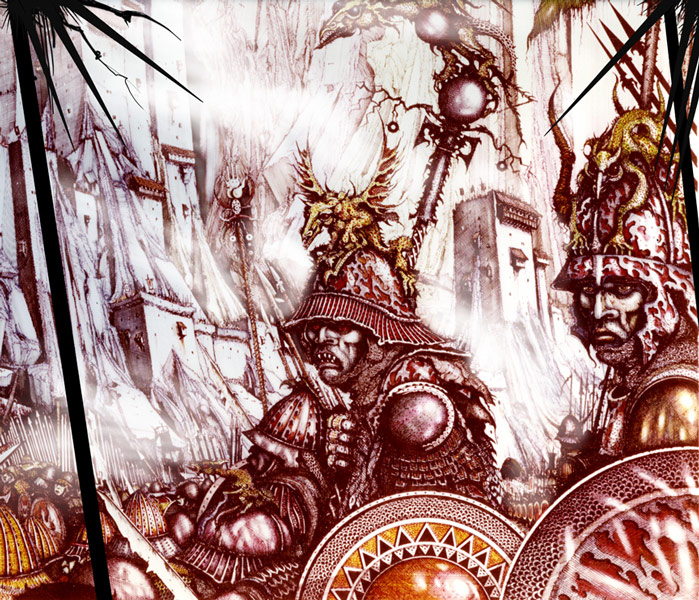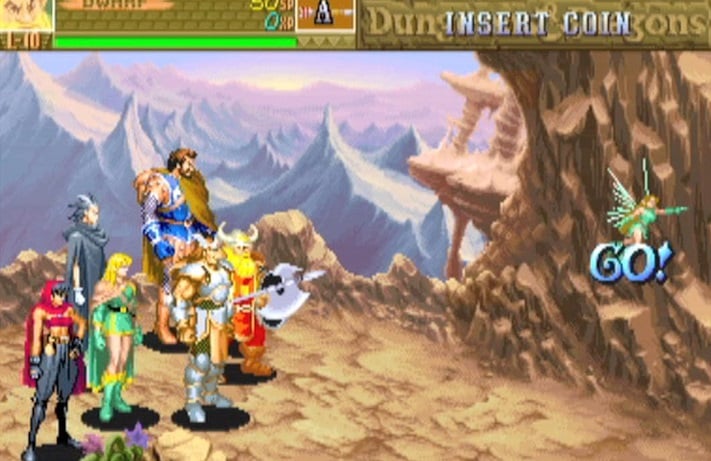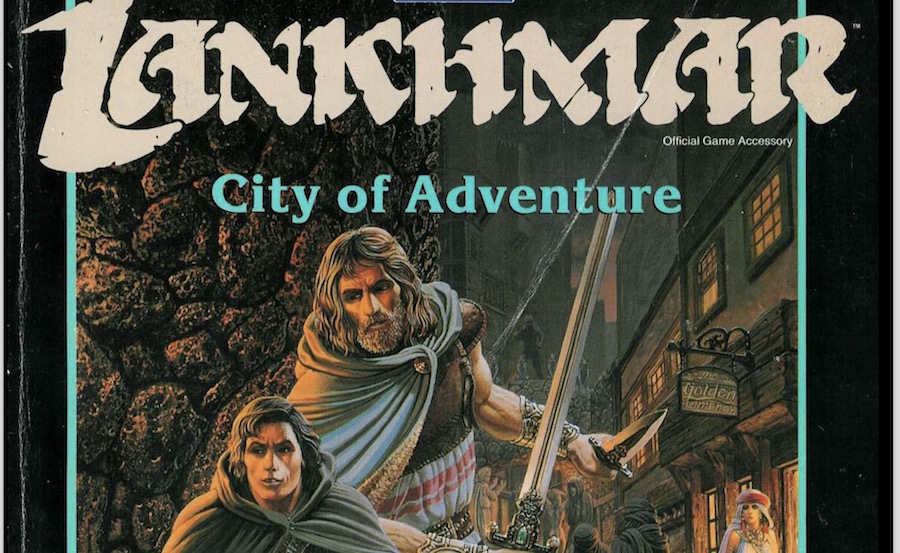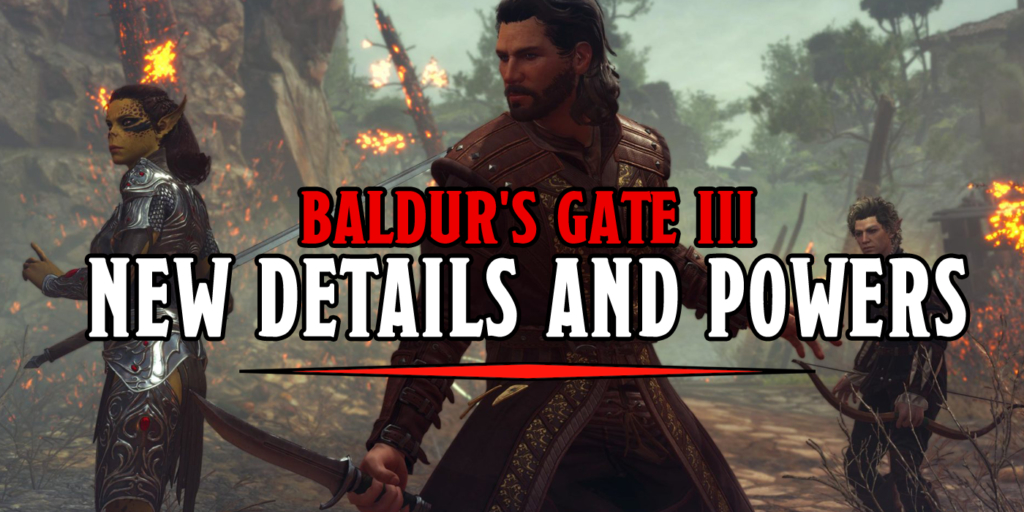D&D: Five Campaign Settings You Might Not Have Tried
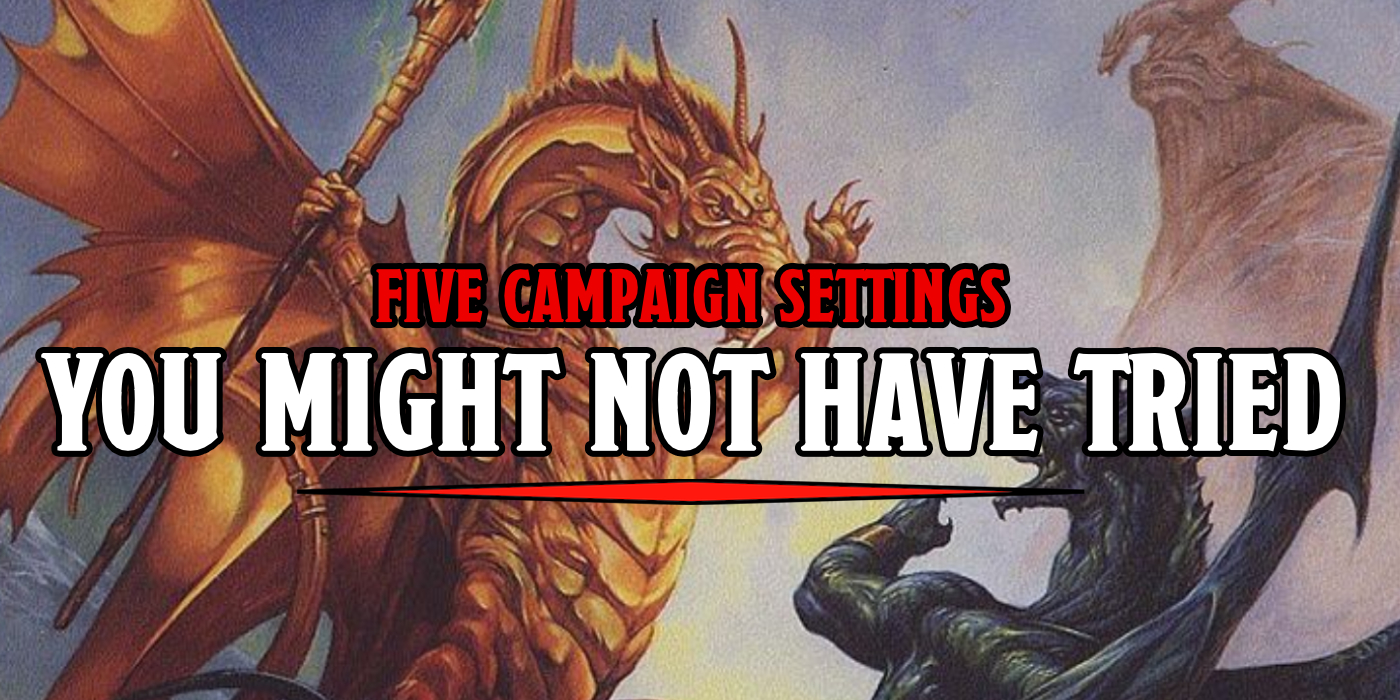

Curious about D&D settings in light of the recent announcement? Everyone knows the big ones, but here’s a look at five settings you might not have tried.
Dungeons and Dragons is chock full of legendary worlds–you can find familiar places like Neverwinter, Waterdeep, the Free City of Greyhawk, Sharn, and Palanthus. Populated with heroes like Elminster, Raistlin, Mordenkainen, and the Lord of Blades…but when you’ve been adventuring in Krynn or Eberron or Dark Sun, or most likely, just the Forgotten Realms, you might lose sight of some of the wonder that D&D has to offer. So today I thought we’d go through a list of five different campaign settings you might not have tried. So join me as we step through the mists of time and take a look at other worlds, waiting to be explored.
Council of Wyrms
What it is: Council of Wyems is a campaign world and framework built around a single principle: everyone playing the game is a dragon. Yup, that’s right, everyone in the party is going to be a dragon, and you’re going to gain in levels as you gain years and gold and start your own hoard. Can you make it from Hatchling to Great Wyrm?
Why you might like it: There’s a lot of mythological sort of fun to be had in this setting, the campaign setting definitely leans heavily the idea of a Council of Wyrms overseeing the growth and activities of dragons as they age. But when you have time enough to take the long view, there’s a chance to play with power when you would almost literally never be able get away with in a different game.
Birthright
What it is: Birthright is a campaign setting that takes place in a world where mortal heroes won divine power in an ancient battle. And that power, called Regency, is passed down through bloodlines. In this game, heroes are scions of a bloodline, gifted with power that makes them natural leaders.
Birthright is a campaign setting about becoming a ruler. It introduced rules for playing at “The Domain Level,” with characters gaining ‘regency’ they can spend to manipulate their domain and events within it. It’s honestly one of the better systems for figuring out how to handle player characters setting up shop and running their own provinces.
Why you might like it: If you want to play a game of politics and planning, where the heroes have a significant pull in the world, then Birthright is for you. It puts heroes squarely in the path of power, giving them access to armies and letting them build castles. It’s the ultimate sandbox toolset for the ultimate sandbox game. It requires extra work on the DM’s part, but worth it if you’re into that style of play.
Kingdoms of Kalamar
What it is: Kingdoms of Kalamar was a setting for 3.x edition Dungeons and Dragons. One of the few 3rd party products to gain the official seal, KoK was published by a cpmpany called Kenzerco, who also made the Knights of the Dinner Table, Kingdoms of Kalamar had a very classic old school feel to it.
The whole setting is there as more of an exercise in simulation–you’ll find things from all aspects of even peasant life in here. Including an early adventure which casts the PCs as farmers, and proceeds to take them through that life and into adventuring as a concept.
Why you might like it: Aside from having the ultimate tutorial label, Kalamar is a very granular setting. Taking place in a world that really wants to capture that old school feeling of representing a world with game mechanics. It has a lot of high fantasy archetypes–though they tend to make grittier decisions. So if you want high fantasy, but grim fantasy, this one might be for you.
Mystara
What it is: Mystara was one of the earliest (and technically the most basic) D&D worlds out there. Originally developed under the name of “The Known World” by Lawrence Shick and Tom Moldvay for their home campaign of Dungeons and Dragons, Mystara joined official canon once Schick (and later Moldvay) was hired by TSR to work on the Expert Set. They needed a world to use as the background material, and lo and behold, one was extant already, just waiting to be used.
Its first appearance was in the Module X1, The Isle of Dread.
The Isle of Dread is a pretty standard, downright simple adventure, designed to introduce concepts like wilderness exploration and mystery to groups only familiar with dungeon-crawl style adventures at the time. Remember, this was back in the day when dungeons had levels, and you had to go down a level if you wanted to level up, so exploring the overworld simply wasn’t done.
Why you might like it: Mystara is decidedly full of adventure. There’s a big empty hollow world withoin a world full of dinosaurs. Including a magic carnosaur who has declared his land to be sacred ground. The paddocks ate endlessly.
Lankhmar, City of Thieves
What it is: A city done right. Lankhmar is a city for adventurers–and it’s easily one of the best city supplements out there. Other campaign settings moght take you on a tour of their realms, but Lankhmar brings a city to life.
Why you might like it: If you want to see how a city interacts with people–whether itself, monsters, or PCs, this is the setting for you. Lankhmar breathes life into a city, transforming it into something that you can explore or use for inspiration in your own games. Plus it has a link to Fahfrd and the Grey Mouser, so you really get to step into a city that beats in time with history.
At any rate, those are five campaign settings that you might not have played with–they’re all definitely worth checking out, but ne warned, sometimes those 2nd Edition settinga could be obtuse. Until next time folks,
Happy Adventuring!


